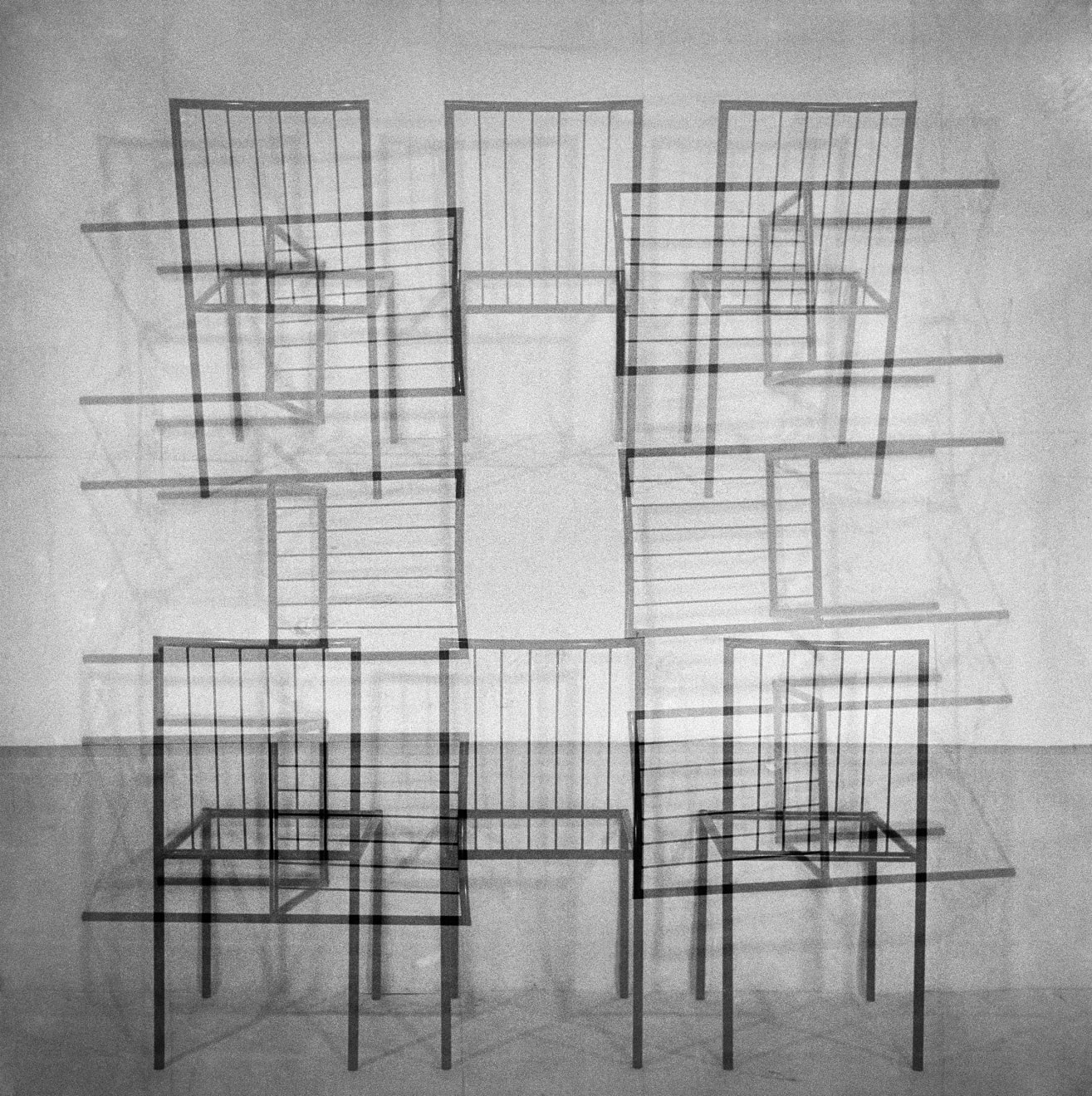-
Obras
Geraldo de Barros
“Cadeira Unilabor”, São Paulo, Brasil, 1954/2008superposição de imagens no fotograma, gelatina e prata sobre papel
multiple-exposure on the negative, gelatin silver print on paper27,5 x 27,5 cm
10.83 x 10.83 ined 9/15Geraldo de Barros is a key name of 20th-century Brazilian art. Combining his first studies on painting with a later interest in photography, he pushed the envelope of the traditional photographic processes, questioning the classic rules of composition. Geraldo de Barros took a formal concern – as clearly seen in Brazilian concretism, in which participated intensely – and managed to merge this with his social concerns, leading him to approach the industrial processes in his work, dealing coherently with geometric constructions, reproducibility, the socialization of art, the theory of form and industrial design.A key figure in the history of Brazilian contemporary art, Geraldo de Barros is recognized for having paved the way for the Brazilian artistic avant-garde of the 1940s, ’50s, and ’60s. His multidisciplinary investigations helped position Brazilian art among the most powerful in the world, breaking artistic paradigms through his innovative use of forms, materials, and supports, as well as his persistent questioning of the notion of the reproducibility of the artwork.In the 1940s, photography and its processes underwent a profound transformation, with young photographers from the Foto Cine Clube Bandeirante photography club in São Paulo leading the way. Among them, Geraldo de Barros stood out by seeing photography no longer as an end but as a means. His Fotoformas series, conceived through experimentation in abstraction and constructivism, provided the title for the first exhibition of modern photography in Brazil (1951, MASP) and opened doors to positioning photography among the visual arts in this country. In creating this series, he manipulated photographic negatives, used masks or other objects to block or filter light during enlargement, experimented with exposure times, etc. The diptych A menina do sapato provides insight into his process, as the original photograph can be compared to the end result of the artist’s manipulation.Um dos artistas brasileiros mais importantes da contemporaneidade, Geraldo de Barros carrega o legado de quem pavimentou o caminho para a vanguarda artística brasileira das décadas de 1940, 50 e 60. A multidisciplinaridade de suas pesquisas contribuiu para posicionar nossa arte entre as mais potentes do mundo, quebrando paradigmas dentro da linguagem artística, seja com as formas, materiais e suportes, seja por meio do questionamento permanente da noção de reprodutibilidade da obra de arte.Ainda na década 1940, a fotografia e seus processos sofreram uma profunda transformação, da qual jovens fotógrafos do Foto Cine Clube Bandeirante, em São Paulo, foram os grandes protagonistas. Dentre eles, destacou-se Geraldo de Barros, que via a fotografia não mais como o fim, mas como o meio. Sua série “Fotoformas”, concebida a partir do experimentalismo em abstração e construtivismo, deu nome à primeira exposição de fotografia moderna no Brasil (1951, MASP) e abriu as portas para posicionar a prática da fotografia entre as artes visuais. Para tanto, ele manipulava os negativos fotográficos, utilizava máscaras ou outros objetos para bloquear ou filtrar luz durante a ampliação, brincada com os tempos de exposição à luz, etc. O díptico “A menina do sapato” é um ótimo exemplo para identificar a fotografia original e a manipulada pelo artista.1de 3
Join our mailing list
* denota campos obrigatórios
We will process the personal data you have supplied to communicate with you in accordance with our Privacy Policy. You can unsubscribe or change your preferences at any time by clicking the link in our emails.
